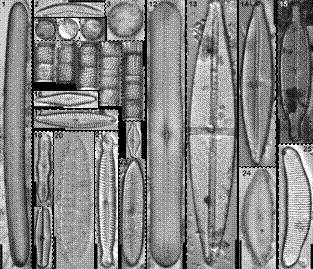A new study of the sediments from a seasonal lake in the Kaas Plateau nestled in Maharashtra’s Western Ghats about 140 km from Pune, indicates it had freshwater accumulation almost for 8000 years before the present (BP) and probably dried up sometimes less than 2000 years ago.
The study of the lake in the Satara district of Maharashtra has indicated a major shift in the Indian Summer Monsoons towards dry and stressed conditions with low rainfall during the Early-Mid–Holocene, around 8664 years BP. Sediment profile dating back to 8000 years which helped decode climatic signatures indicated a relatively reduced rainfall and weak southwest monsoon during the late Holocene (around 2827 years BP), according information provided by the Ministry of Science and Technology today.
Kaas Plateau was included in the UNESCO World Natural Heritage Site in 2012. Known as Kaas Pathar in Marathi, its name is derived from the Kaasa tree, botanically known as Elaeocarpus glandulosus (rudraksha family).
Designated as a biodiversity hotspot, the Kaas Plateau comes to life with various seasonal flowers forming a floral carpet over the entire lateritic crust during August and September. Control measures have been implemented by the forest authorities to handle the pressure of nature lovers visiting the Kaas Plateau.
Agharkar Research Institute (ARI), Pune, an autonomous institute of the Department of Science and Technology along with the National Centre for Earth Sciences, Thiruvananthapuram studied the sediments of a seasonal lake to understand and decipher the past climate of the Kaas Plateau.
“Sediment profile dating back to 8000 years which was analysed (by available carbon dates-AMS) to decode the climatic signatures, indicated that the seasonal lake favoured freshwater accumulation almost for 8000 years before the present (BP) and probably dried sometimes after 2000 years BP,” the ministry’s statement said.
The observations of the scientists showed a decrease in rainfall and a weakened southwest Monsoon during the late Holocene (around 2827 years BP). However, during the recent past (around last 1000 years), pollen, as well as the presence of a high number of planktonic and pollution-tolerant diatom taxa indicated lake eutrophication, possibly due to human impact and cattle/livestock farming in the catchment.
The study by Thacker, Mital; Limaye, Ruta B; D, Padmalal; Rajaguru, SN; Kumaran, KPN; Punekar, SA; B Karthick strongly suggests that the ‘Flower Wonder’ might have existed for a longer duration, up to March-April, during the early–mid-Holocene (8000–5000 years), when the monsoon rainfall (more than 100 rainy days) was undoubtedly better than today.




















